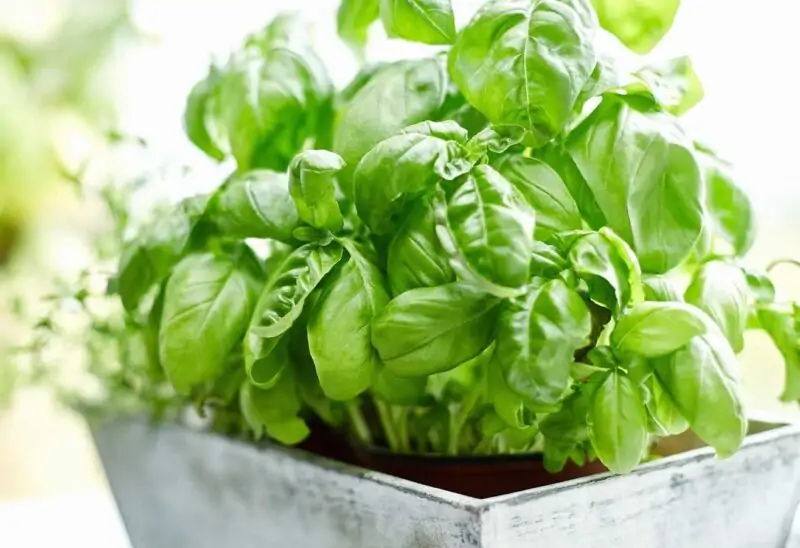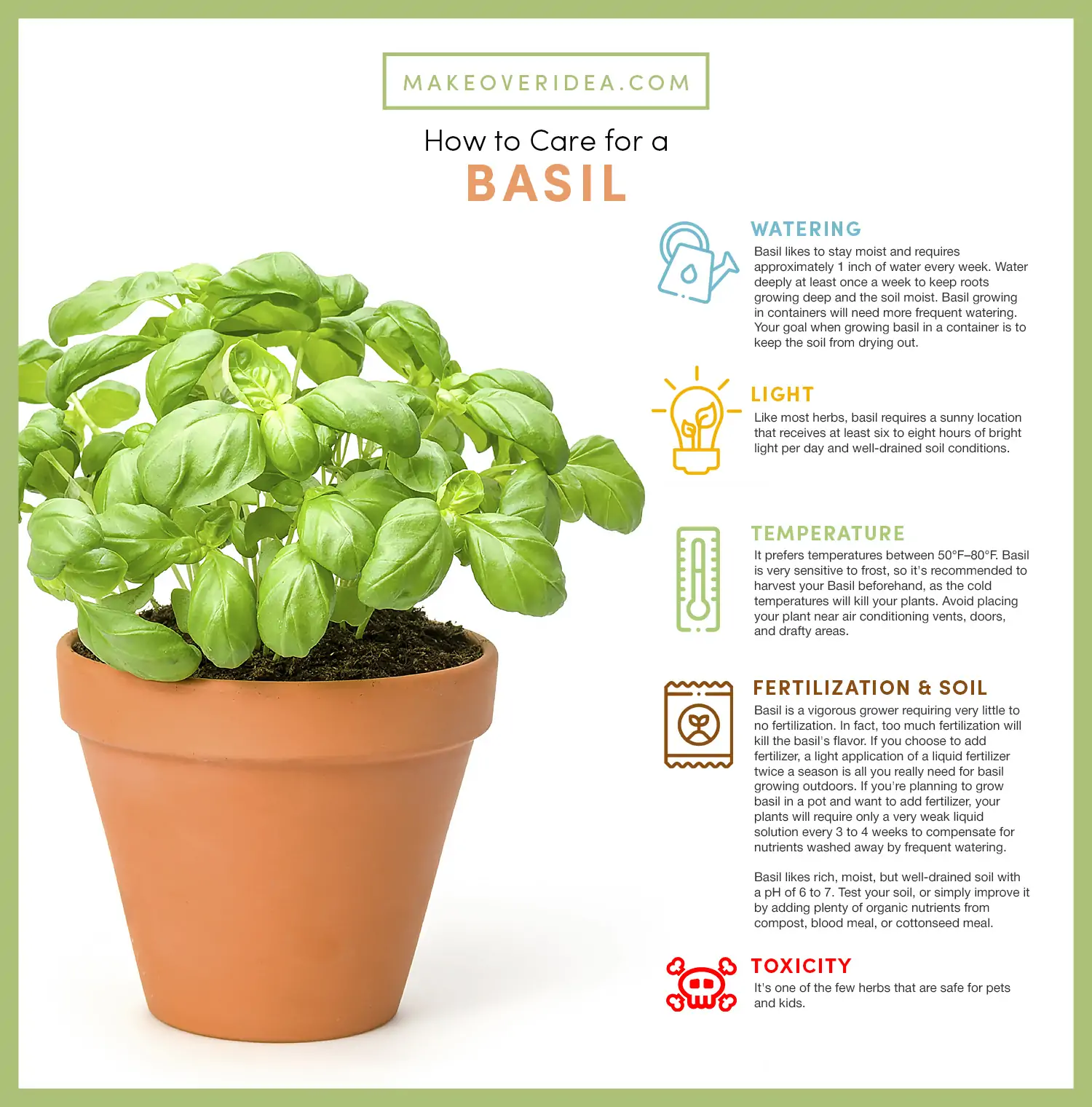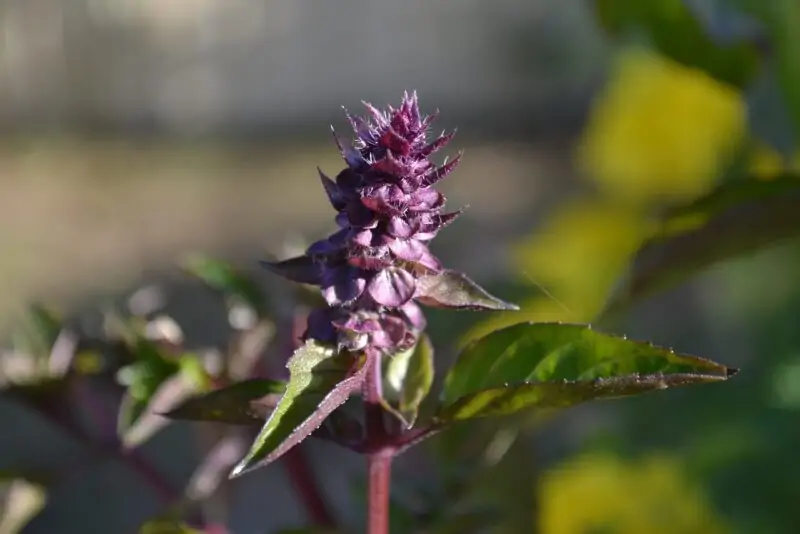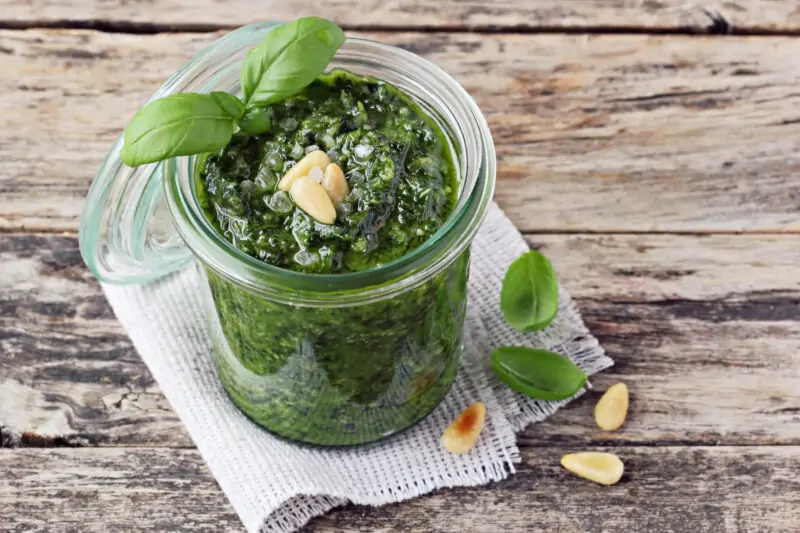How Long Do Basil Plants Live? Basil Life Cycle & Lifespan

Warning: Undefined property: stdClass::$error in /sites/makeoveridea.com/wp-content/themes/theissue/inc/misc.php on line 71
Warning: Undefined property: stdClass::$error in /sites/makeoveridea.com/wp-content/themes/theissue/inc/misc.php on line 71
Basil is a popular herb known for its distinctive aroma and taste. It’s commonly used in cooking many dishes, such as pesto, soups, salads, and even cocktails! Basil plants are relatively easy to grow but require specific conditions to thrive. In this article, we’ll explore how long do basil plants live, both indoors and outdoors, along with their life cycle stages. We’ll also cover how to best care for your basil plant so that it may live a long healthy life.
Basil Plant Lifespan
How Long Do Basil Plants Live Indoors and Outdoors?
The lifespan of a basil plant, an annual plant, depends on various factors such as climate conditions (indoor or outdoor), soil quality, and nutrients available to the plant’s root system. Indoor-grown basil, kept indoors with steady warm temperatures, may last longer, having an average lifespan between 6-8 months when provided optimal growing conditions. In contrast, outdoor-grown basil plants can survive up to two years with proper care during their growth period.
Basil Plant Life Cycle: Key Stages of Growth
To better understand how long your sweet or purple basil will last, you need to grasp some basics about its lifecycle stages:
Germination
Basil seeds sprout within five days under ideal environmental temperature. The range should be around 60°F -75°F degrees Fahrenheit.
Vegetative Stage
During this stage, leaves start appearing from stems. These new branches become more significant after each set until they mature enough to produce flowers at later developmental phases.
Flowering Stage
This phase marks the end of life since, once the bloom begins, production stops altogether. This results in the plant’s death soon after unless promptly pruned.
End of Season: Why Does Your Basil Die?
When winter approaches or temperatures drop significantly towards the fall, any remaining foliage outside will die off due to lack of sunlight exposure. This is because photosynthesis slows down dramatically, leading to eventual wilting before dying altogether without intervention.
Growing Basil for Optimal Lifespan
Best Conditions for Basil Growth
To ensure your basil plant lives its longest life, you need to provide it with the best growing conditions possible. Here are some key factors that can affect the lifespan of your basil plants:
Soil
Basil requires well-draining soil to prevent root rot and other fungal diseases. It also needs a pH range between 6 and 7.
Water
Watering is crucial when it comes to keeping your basil plant alive since too little or too much water can cause stress on the roots, leading towards death over time.
Light
Basil thrives in full sunlight, so make sure you place them where they receive maximum exposure throughout most of their growth period. For indoor plants, use artificial lighting sources such as LED Grow Lights.
Temperature
The ideal temperature range for growing basil is between 70°F-80°F degrees Fahrenheit during daytime. Cooler temperatures around fifty-five degrees at nighttime hours help promote better flowering results later on.
Nutrients
Your basil will require specific nutrients like nitrogen, phosphorus, and potassium. These should be added periodically by fertilizing appropriately, depending upon how long you want this herb to thrive.

Growing Basil Indoors vs Outdoors
Indoor-grown basil plants, like the basil plant indoors, have less risk associated with pests compared to outdoor ones due to the controlled environment available within households. However, since basil plants can be grown indoors or outdoors, there’s no exact formula for predicting the success rate given various environmental variables at play outside. Indoor care is more manageable but still requires attention to proper maintenance practices, including watering your basil, light cycles, and nutrient supplementation.
Outdoor-grown basil may survive for two years under optimal conditions if provided adequate care, avoiding common pitfalls found outdoors such as pest infestations, weather fluctuations, and adverse climate changes.
Potted Basil: Annual or Perennial?
Potted basil falls into either annual or perennial categories. This depends mainly on whether the plants can endure winter months or not. Annual basil plants die after the flowering season ends, while perennial plants can survive multiple years if cared for correctly.
Annual basils, with a basil life cycle that is relatively short, are best suited for indoor growing. They’re less likely to attract pests, and their lifespan is relatively shorter compared to outdoor counterparts. Outdoor basil plants may require more attention due to exposure to unfavorable elements like harsh sunlight or extreme cold temperatures during winter months.
Basil Flowers and Reproduction

When Does Basil Flower?
Basil flowers typically appear at the end of the vegetative stage when plants have matured enough. Once blooming starts, basil plants’ production stops altogether, resulting in the plant’s death soon after unless pruned promptly.
Do Basil Plants Die After Flowering?
Yes, basil plants die after flowering. Once the bloom begins, production stops altogether, leading to wilting and eventual death without intervention.
How to Keep Your Basil From Flowering
To keep your basil growing and prevent flowering, you need to understand that this herb requires specific conditions for growth. These include adequate light, nutrient supplementation, and watering schedules. If any of these factors become imbalanced, the chances of premature blooming increase, negatively affecting the plant’s health.
Prevent premature bud formation by cutting off developing branches near the base stem regularly, every few weeks. This diverts energy elsewhere instead of being wasted on producing unproductive parts.
Edible Basil Flowers: Usage in Cooking

Edible basil flowers, like basil leaves, offer unique flavor profiles for many dishes, adding both texture and visual appeal. Some popular uses include sprinkling petals on salads, soups, pasta sauces, desserts, and even garnishing cocktails.
Next time, try experimenting with a new recipe using edible flower buds. Impress your guests with your culinary skills and creativity demonstrated through the use of simple yet elegant herbs.
Harvesting and Propagating Basil
Basil, a popular herb used in many dishes, including pesto, salads, soups, and sauces, is easy to grow at home and enjoy its fresh flavor all year round. In this article, we’ll cover everything you need to know about harvesting and propagating new basil plants.
Harvesting Basil Seeds
Growing basil produces seeds that can be harvested for future planting.
To harvest the seeds from your mature basil plant:
- Allow some of the flowers to bloom.
- Wait until they start turning brown before cutting them off.
- Hang them upside down in a dry place for several days until they’re completely dry.
- Rub the flower heads between your fingers over a bowl or plate to release the tiny black seeds.
Store these seeds in an envelope or jar labeled with their name for future use.
Pruning And Harvesting Techniques For Basil
To keep your plants healthy throughout their lifespan:
- Pinch back young leaves regularly.
- Remove any yellowed leaves.
- Cut below where two branches meet for bushier growth.
- Cut just above where two branches meet for taller growth.
When harvesting large amounts of fresh basil:
- Cut stems early morning after dew has dried but before it gets hot outside.
- Use sharp scissors or kitchen shears.
- Remove larger stem sections first rather than individual leaves for faster sprouting.
It’s important not to remove more than one-third of the total volume per session. Instead, wait a few weeks before the next pruning session.
Perennial And Non-perennial Varieties Of Basil
Perennial basils, such as African Blue or Holy Basil, are hardier and will live for many years with proper care. They can be propagated through cuttings or division of mature plants.
Non-perennial basils, such as Sweet Basil, Thai basil, Cinnamon Basil, and Purple Ruffles, have a shorter lifespan but still produce abundant leaves. It’s best to replant these varieties every year from seed or young plant starts.
FAQs
Basil plants typically live for 6 to 8 months when grown indoors and can live up to two years outdoors under optimal conditions. To keep your basil plants healthy and extend their lifespan, they need proper care, including adequate sunlight, regular watering, and nutrient-rich soil. It is essential to ensure the plant is getting enough light, as basil plants require at least 6 hours of sunlight per day. Additionally, allow the plant to produce new sets of leaves by pinching back the growing tips regularly. Keep in mind that basil isn’t a perennial plant, so it will eventually die even with proper care. However, you can propagate new plants from your existing basil plant to maintain a steady supply of this aromatic herb in your garden.
Yes! If you don’t want your outdoor basil to die when the weather turns cold, simply transplant it into a pot with fresh soil before the last frost hits. Basil plants need warmth, so keep indoor temperatures above 60°F/15°C consistently during winter months.
Place the indoor basil plant in an area that gets at least six hours of sunlight per day (or under grow lights) and water basil regularly without letting the soil dry out completely between watering sessions. Use room temperature water, preferably distilled since tap water can contain chlorine which could harm roots over time.
Most types of basil are annuals, which means they complete their basil life cycle within one growing season and then die off naturally once seeds are produced. However, basil lifespan may vary depending on climate conditions (warm climates being ideal).
If you’re looking for ways to extend your non-perennial variety’s lifespan by keeping its healthy growth going continuously:
Pinch back any flowers as soon as they appear.
Cut back stem tops after a couple of weeks.
Water regularly without overwatering.
Feed every few weeks using liquid fertilizers.
Absolutely! Not only do they add color contrast to dishes, but they also provide mild floral notes. The most common way is adding them directly onto salads, pizzas, and pastas.
To get more creative with edible flower usage, try making pesto sauce: blend together garlic cloves, pine nuts, olive oil, Parmesan cheese, and basil flowers until smooth.
Yes! Using the recipe mentioned above or any other pesto sauce variation you like. Remember to only use fresh, healthy-looking blooms since wilted ones will not taste good at all.
Conclusion
Basil is an easy herb to grow that can provide a constant supply of fresh flavor for your kitchen. By following these simple tips for harvesting and propagating new basil plants, you can keep your plants healthy and productive year after year. A common question is, how long do basil plants live? The answer depends on the variety and growing conditions, but with proper care, they can thrive throughout the growing season. Don’t forget to experiment with different varieties of basil as well as edible flower usage in cooking. Allow the plant to grow new leaves all summer, and enjoy the end of the season with a bountiful harvest. So, if you love gardening and using basil in your cooking, give these tips a try, and enjoy the benefits of growing basil plants.